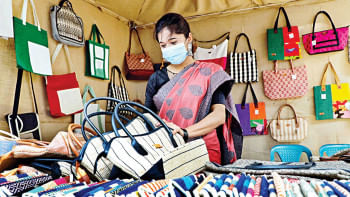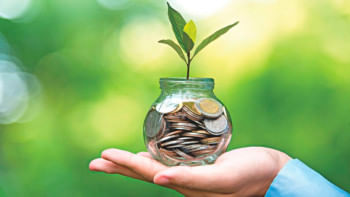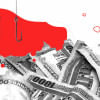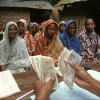Financial inclusion for an inclusive Bangladesh

My earliest childhood memories go back to our days in the then West Pakistan during the sixties and early seventies. My father was then serving in the Pakistan Air Force as he was posted from one air force base to another with the family tagging along. We felt far away from our larger family back in Mirsarai, Chattogram and longed to be with them. Even while our family was subjected to confinement in a prison camp for three years during and after the Liberation War, a concern my father always had was about how to send money back home to our extended family members. The postal service was the only method available, a process however reliable, took months to get the money to the intended recipients. Getting a confirmation of delivery of the funds was yet a process of its own!
When we returned to Bangladesh at the end of 1973, our newly liberated country, we heard stories of the difficulties our extended family had to endure to get the remitted funds, which included multiple trips to the nearest state-run Post Office, which was still miles away to inquire whether there was any news from my parents or if the money sent by our late father had arrived. There was no bank branch in the vicinity, there were also no micro-lender, no agent bank or even the illegal hundi traders to carry a remitted amount to the doorstep of the recipients.
As I am writing this article, I had a chat with the school authorities at a rural college, which my late father helped establish. Our family supports education of children in the region and I had to talk to the college authorities to inquire of their funding needs. How to send the money is now least of my concerns. It is in stark contrast to the memories of my childhood to witness how far along the process of remitting money has come. Sending money now is as easy as owning a phone! If you need to intervene in an emergency of your relatives at a faraway place, you just click an MFS App. The money is sent right away, helping save lives, funding education of your poor relatives or helping build the community centre that your village badly needs.
Bangladesh has trodden a long path in its journey to ensure financial inclusion of its teeming population. More than 130 million people can now access the internet. The same number of people can access an MFS app. Hundreds of millions of dollars are remitted across the country every day. And tens of millions of people now have an account in a regular commercial bank and an equal number or more people are member-borrowers of micro-lenders, which have empowered poor rural women like never before in the history of Bangladesh. And in recent years, we have seen how agent banks penetrated deep into the rural haat (bazaar), taking vital financial services to the doorstep of a farmer, mason or a share-cropper.
But in a country of 170 million people have we done enough to ensure financial inclusion for every citizen of Bangladesh? Financial inclusion is a must for an inclusive society, where anyone can access financial services to maximise his or her financial gain. In a landmark 2021-2026 National Financial Inclusion Strategy, the Bangladesh government has clearly stated its goal to achieve social cohesion and stability through ensuring access and usage of quality financial services for all.

It is true there has been a proliferation of financial services in the country. There are ATMs spread across most of the towns. You can find a Bkash or Nagad agent operating in every little village in the country. But given the transformational role that financial technology (FinTech) has played in our neighbouring nations like China, Indonesia and Vietnam, our banking sector seems to still lag behind. There has been a visible effort by the banking sector in this regard, however, such financial services have only scratched the surface of the true revolutionary potentials that the FinTech services have shown in many parts of the globe.
Thanks largely to the life-changing roles of the FinTech services, financial inclusion has expanded dramatically between 2011 and 2017. Some 1.2 billion adults in the world have now gained access to a bank account. Some 70 percent of adults worldwide had bank accounts as of 2017. More than 80 countries have now rolled out digital financial services and some of these mobile device-based services have attained a sizable market. As a result, millions of formerly underserved and excluded poor clients are switching from only using cash for formal financial transactions to an array of smart financial services through the use of digital technologies.
However, according to the most recent Findex data, at least 1.7 billion people, or close to one third of all adults, were still without a bank account as of 2017. Women from low-income rural households or those who are unemployed made up about half of the unbanked population. In developing countries, the gender disparity in account ownership remained constant between 2011 and 2017, at only nine percentage points, making it difficult for women to successfully manage their finances. Less gender inequality was observed in countries where the use of mobile money was widespread.
Unfortunately, we can see some of this dismal scenario in parts of our country. A large section of our population still has not reaped the benefits of MFS or Agent Banking, let alone traditional banking. Per capita borrowing in Bangladesh remains very low. Many still believe banking services are actually meant for the affluent class of the society. They would save up small coins and cash notes in their trunks or under the mattress, not metaphorically!
Foreign banks that have extensive experience across the developed and the developing countries can help bring that qualitative change to the scenario. They have led the financial transformation of many countries similar to Bangladesh, empowering their citizens, boosting economic growth and making life easier for everyone.
Selim Barkat is country manager, HBL-Bangladesh.

 For all latest news, follow The Daily Star's Google News channel.
For all latest news, follow The Daily Star's Google News channel. 










Comments